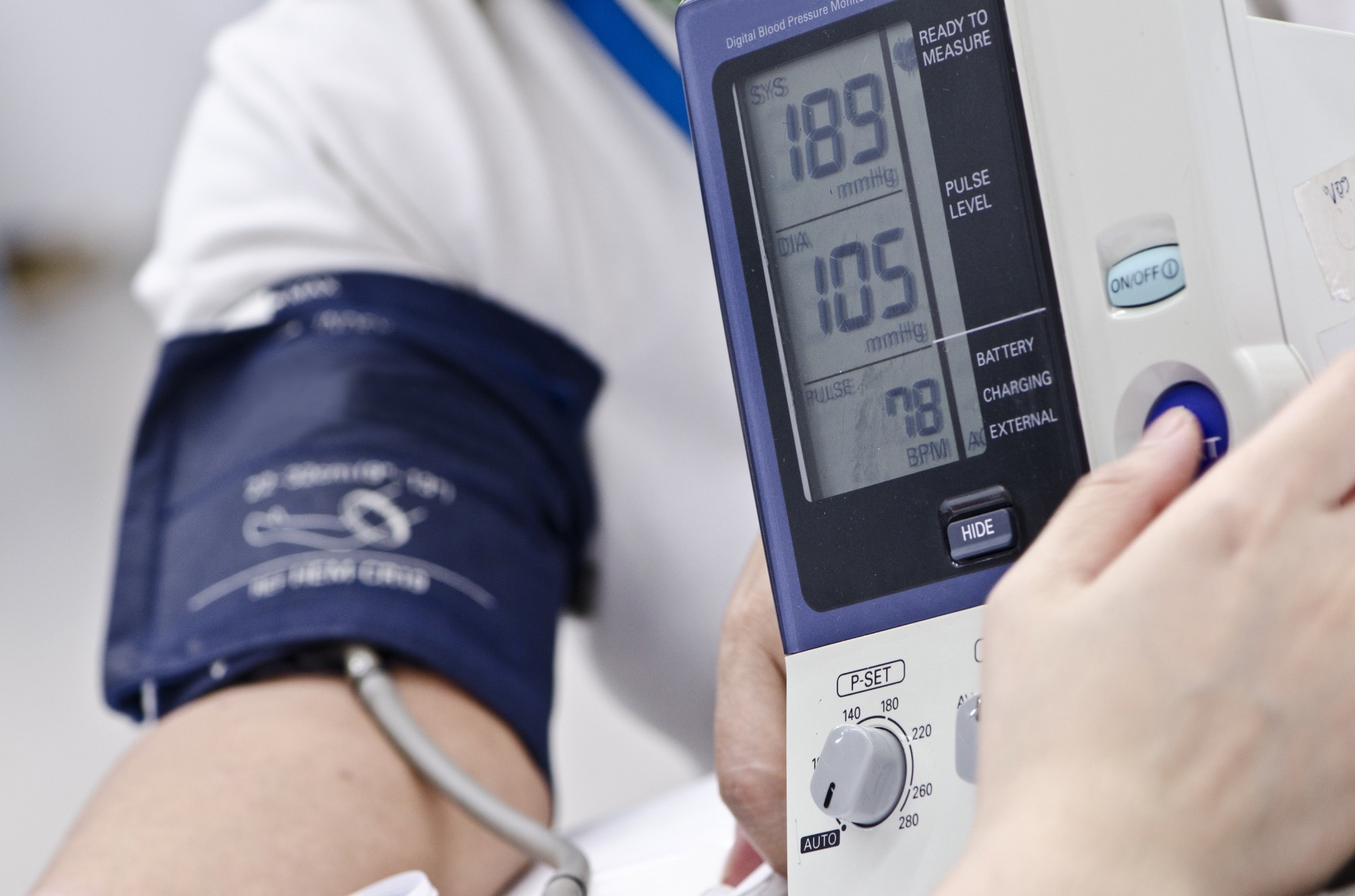In a recent study published in the journal EClinicalMedicine, researchers quantify the number of dementia cases that would occur in the absence of hypertension to estimate the dementia-associated population attributable fraction (PAF) of hypertension at global, national, and regional levels.
 Study: Population attributable fraction of hypertension for dementia: global, regional, and national estimates for 186 countries. Image Credit: Shine Nucha / Shutterstock.com
Study: Population attributable fraction of hypertension for dementia: global, regional, and national estimates for 186 countries. Image Credit: Shine Nucha / Shutterstock.com
Background
About 57 million individuals around the world are believed to be living with dementia, which is one of the leading causes of years lived with disability. Previous studies have shown that hypertension, especially during midlife, increases the likelihood of dementia.
Recent meta-analyses have shown that reducing blood pressure levels is associated with a reduced risk of dementia. However, the global rates of detection and treatment of hypertension, especially in low-income countries, are suboptimal.
To implement public health interventions to reduce the health burden and prevalence of dementia, it is essential to understand the PAF of specific risk factors.
Previously, dementia-related PAF for hypertension was estimated based only on a history of diagnosed hypertension, which presents the risk of underestimation of hypertension prevalence. Thus, a more accurate method of estimating the prevalence of both hypertension and dementia, as well as the association between these two conditions, is needed to better understand the dementia-associated PAF of hypertension.
About the study
In the present study, researchers searched publicly available governmental and international databases to determine the prevalence of dementia and hypertension on a population level. Longitudinal observation studies that examined how hypertension was associated with dementia in an age-specific manner were considered for the study.
The inclusion criteria comprised observational studies with data from longitudinal follow-ups, a large study population of over 500, an examination of the association between the age of diagnosis of hypertension with all-cause dementia risk, and an age-wise report of hazard ratios. Studies that were cross-sectional examined non-community dwelling specific cohorts such as inpatients reported only on the association related to vascular dementia, or did not include metrics specific to age were excluded.
Regional population data were obtained for six of the geoscheme regions stipulated by the United Nations (U.N.), including Asia, Africa, the Caribbean, Europe, Oceania, North America, and Latin America. National-level data was obtained from the 2019 U.N. World Population Prospectus.
The definition of hypertension was based on systolic and diastolic blood pressures exceeding 140 mm Hg and 90 mm Hg, respectively, or the regular use of medications to control hypertension.
Dementia hazard ratios (HRs) that were multi-variable adjusted and based on the age of hypertension diagnosis were obtained from the United Kingdom Biobank, which presents HRs for dementia for those less than 35 of age, between 35 and 44, between 45 and 54, and between 55 and 64 years.
HRs for ages above 65 and below 75 were obtained from an Atherosclerosis Risk in Communities Study (ARIC). PAF was calculated by determining the proportion of all cases associated with hypertension among the total number of cases, with male and female PAF values considered separately.
Results
The dementia-related PAF of hypertension is 15.8%, thus indicating that methods to improve early detection and treatment could significantly reduce the risk of dementia. Prevalence data for dementia and hypertension were reported by 186 countries, with the highest dementia-related PAF of hypertension observed in the Caribbean and Latin America (18%) and Europe (17.2%)
The age-specific fraction of dementia globally attributed to hypertension was the highest for individuals between the ages of 30 and 44 years of age and decreased with age. The 2019 estimate for dementia cases attributable to hypertension was 9.5 million. The previous dementia-related PAF of hypertension, which was calculated based on prior hypertension history, was 3.9%.
The findings of the present study highlight that the prevalence of the association between hypertension and dementia was much higher than previously estimated. Nevertheless, these observations also support the recent research and global action plan designed by the World Health Organization to address mid-life hypertension in an attempt to lower the global health burden of dementia.
Conclusions
The current study reported national, regional, and global estimates of dementia-related PAF of hypertension to be 15.8%. Thus, there remains an urgent need to optimize diagnostic and treatment methods for hypertension to reduce the dementia-associated global health burden, as well as address mid-life hypertension to reduce the worldwide prevalence of dementia.
Journal reference:
- Mulligan, M. D., Murphy, R., Reddin, C., et al. (2023). Population attributable fraction of hypertension for dementia: global, regional, and national estimates for 186 countries. EClinicalMedicine 60. doi:10.1016/j.eclinm.2023.102012